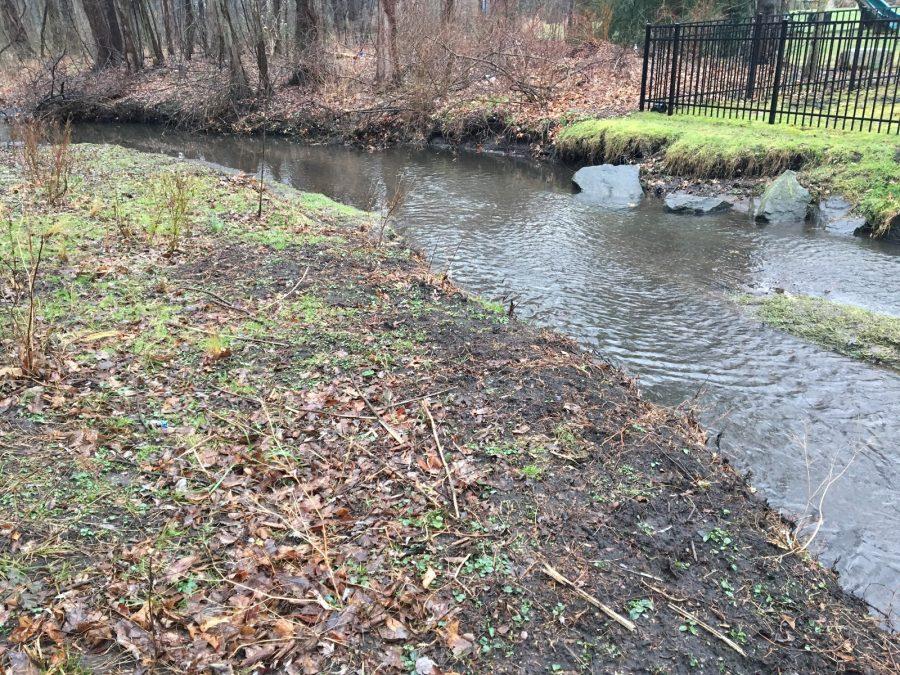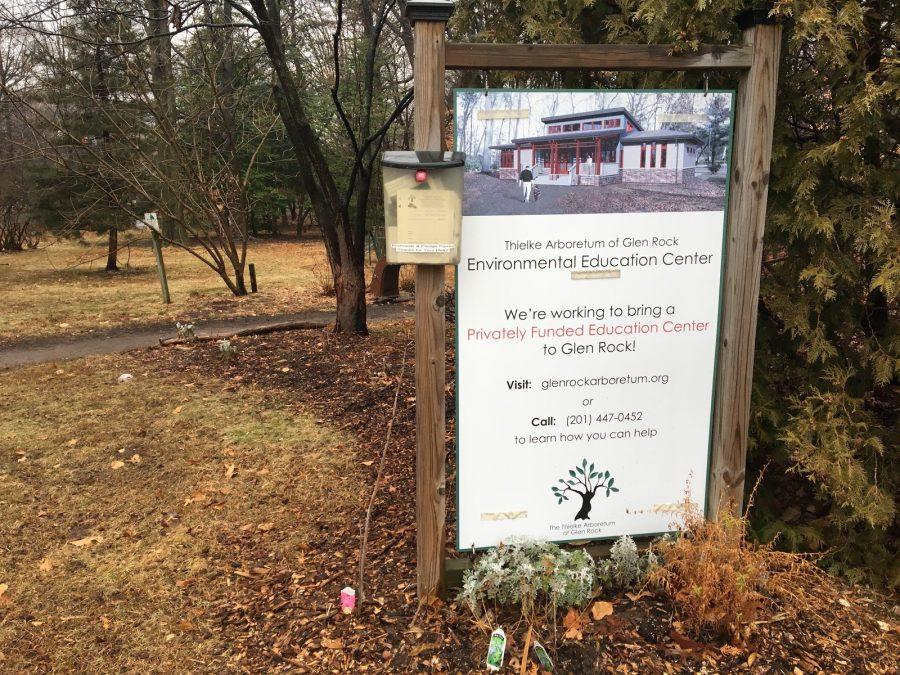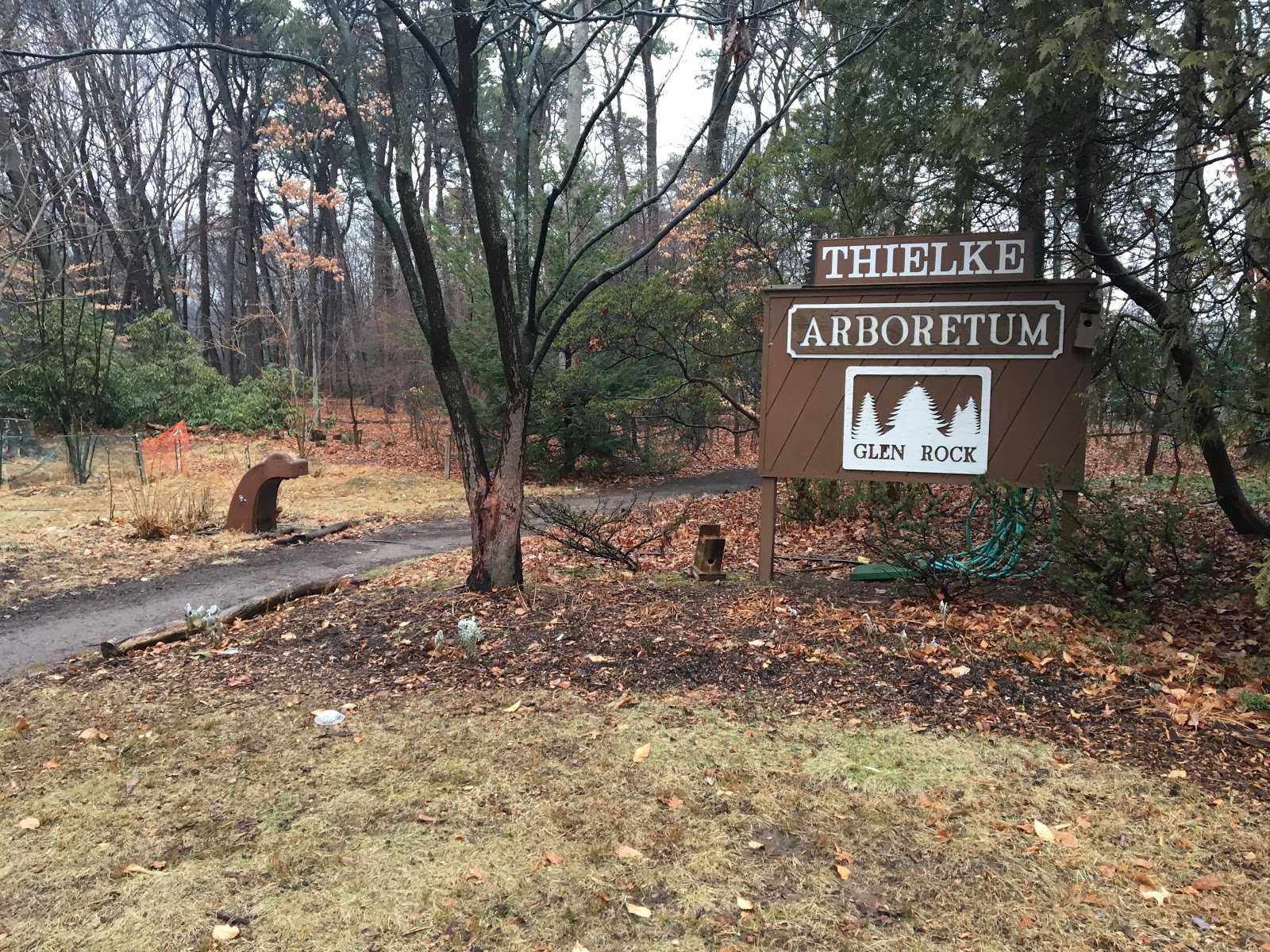Arboretum raises questions on impact of humans, nature
February 13, 2017
Due to her mother’s fading eyesight, Karen Ricciardi patiently told grocery prices to her mother: 69 cents per pound for bananas was too expensive for her mother, Carole Thielke. Yet the price of cream-filled sandwich cookies was never too much. Those cookies were going to Thielke’s volunteers at the Thielke Arboretum, named in her honor, for their hard work in maintaining the land and providing a learning experience for others.
An education center in the arboretum, located on Doremus Avenue, is currently under debate as a place for volunteers to teach about nature.
Although the center was not Thielke’s idea, Ricciardi says that her mother would have loved to have seen the center started in the arboretum before Thielke passed away this past October.
“Her dream was just to maintain and make it as beautiful as possible,” Ricciardi said. “The dream and the vision is to teach and educate.”
Ricciardi explained that her mother was always involved in helping the community. She organized the volunteers, set up the gazebo in the park and was described as the “keeper of the land” for her protection of the area. The town board decided to name the arboretum after her for all her years of volunteering.
“She was very honored and very humbled but she said ‘I don’t like it’,” according to Ricciardi. “She goes, ‘It’s not me, it’s the volunteers. It’s all the volunteers. They’re a part of it. It’s their arboretum.’”
The center would provide a place for the volunteers to get organized and a place to store records, books, and tools.
According to President of the board of trustees of the arboretum Tom Vielbig, the main use is for educational purposes.
“We do somewhere in the order of 20 to 30 school programs a year,” Vielbig said. “[It’s] a place for those kids to start their visit to the arboretum and a place to come back after the lesson.”
Resident Bob Burslem has voiced his opinion in another way, by opposing the construction of the building for various reasons, one of which is education.
“I don’t know that this facility will provide any additional education that our schools can’t provide,” Burslem said.
The Friends of the Arboretum (FOGRA), the non-profit organization responsible for maintaining and developing the arboretum, came up with the idea of the center approximately 10 years ago, yet it has recently come to the point where it is ready to be built. The main reason for the delay in construction is fundraising, Vielbig said.
“We’ve committed to build it and pay for it privately but we’re not asking for money from the town and so to raise that kind of money is time consuming and it takes years.” Vielbig said.
The center would be open on Tuesdays and Saturdays, the current days people volunteer, and on days where programs have been arranged. It will serve as a “home base”, according to Vielbig, providing information to look at in display cases exhibiting items one may see prior to exploring the park.
“You might take a look at the center and maybe take a look at the things that you could be looking for when you’re walking the trail,” Vielbig said. “it would really help enhance the experience with the visit to the arboretum.”
A main concern of those opposed to the education building is the environmental impacts it could bring to the arboretum.
“It really is a gem, the arboretum,” resident Gabe Bullaro said. “Enjoy the beauty of it because open space is a natural resource and slowly but surely we’re destroying it.”
The arboretum is a natural ecosystem comprised of wetlands and wildlife of all kinds. With intentions of keeping the arboretum open land, in 1954 the town agreed to purchase the land of the arboretum so it would be a protected area to not be built on. Amongst the trees and plants, located in the back of the park is Diamond Brook which runs through the arboretum on it’s path from Hohokus to the Passaic River.
“The brook is polluted and doesn’t run as much,” Bullaro said. “It’s not as powerful because they’ve been building a lot of buildings upstream, so the more buildings you build, the more you hurt the environment, and that’s why I’m against this.”

Flowing through the back of the arboretum, Diamond brook travels on it’s path towards the Passaic River.
The Department of Environmental Protection has a regulation stating that one cannot build within 50 feet of wetlands. FOGRA has planned to build the center away from the pond and brook and states that the center would not be on any wetlands or transition areas. At 1,750 square feet, the building would take up less than 1 percent of the 11 acres the arboretum has.
“It leaves a really small footprint,” Vielbig said. “The department of environmental protection approves of the site where we’re putting it. There’s very little there. It’s mostly just scrub plantings and there would be pretty much no impact on the wildlife.”
Children’s author Dr. Seuss discusses environmental impact in his story The Lorax, to which Bullaro relates the situation towards. He feels that the education center would hurt the environment and would be used as a business venture, much like the character ‘the Onceler’ in the Lorax.
“Onceler is the guy that wants to make a business out of it,” Bullaro said. “They want to build that building and they think they could make money with commercializing it.”
According to the arboretum’s website, the center will not be used as a commercial development of any sort and the current plan is to just construct the one building.
“They [the citizens opposed] feel that if you build one building, when is the town building another building,” Ricciardi said. “They don’t see past from what I feel, they’re [FOGRA] asking for less than one percent of the 11 acres.”
According to Bullaro, under the Municipal Land Use Act there has to be a planning board that is obligated to create a master plan. There are experts who have studied the land and devised a master plan for suburban or urban towns.
“The arboretum specifically is referred to a master plan and the master planners specifically said you should keep this park land as open space,” Bullaro said.
Burslem claims a petition signed by over 500 residents was circulated in July for inclusion on the November election ballot as a non binding referendum. The town government decided not to act on it because they didn’t have to.
“There are some people that are passionate about the open spaces remaining where they are,” Burslem said.

Cars whizzing by Doremus Avenue and pedestrians strolling through the park can see the sign which informs the community of the center with a projected image of the building.
Doremus Avenue is not only home to the arboretum, but to the recycling center, condo complexes and municipal pool. An added fear of those opposed is the traffic issues the area will possess, especially during pool season, when traffic is at a high. Vielbig says that the center would be more active during the school year, from late September to early May when the pool is closed.
“Our expectations is that the summer hours at the education center would be really quiet, not a lot of activity,” Vielbig said. “What I’m hearing is their main concern is there’s going to be more traffic on top of the craziness that’s already there and that’s not the deal.”
Citizens of the town have different opinions towards the development of the education center and what they think is best. Dr. Seuss once stated in his The Lorax “unless someone like you cares a whole awful lot, nothing’s going to get better, it’s not.”
The general public has expressed negative and positive impacts of the education center being put in the arboretum, but the common goal of protecting the environment threads through their minds, much like that of Thielke.
“She had her vision of teaching people more so that they would enjoy it,” Ricciardi said. “And [the] environment, we need to take care of the land. That was her dream.”

Eileen Hillock • Feb 13, 2017 at 12:04 pm
Very well written article Christine. I admire the way you presented resident opinions and concerns in a fair and balanced manner.
Tom Vielbig • Feb 13, 2017 at 11:27 am
Thanks for a great article! For more information or replies to some of the concerns raised, please visit http://www.glenrockarboretum.org/pages/FAQ.aspx
This facility will help the volunteers maintain the arboretum and increase environmental awareness of students and visitors alike! (It will also just be a nice spot to start your visit).